Dear Artist,
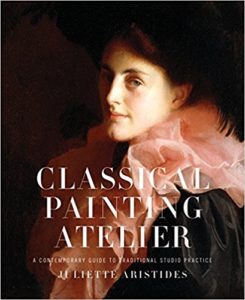
Classical Painting Atelier by Juliette Aristides — Valuable apprenticeship to some of the better historical artists.
If your intention is to make unique, somewhat abstracted works with a distinctive style and a unique personality, you may not be able to go directly there. Indeed, some accomplished artists insist that you can’t reach a significant level of distinction without a solid grounding in the basics. By basics we mean that a person is comfortable and somewhat proficient with academic drawing, composition, colour control and other technical skills. This means the development of processes and techniques where design achievement works hand in hand with applied knowledge of perspective, aerial perspective and other devices, as well as familiarity with concepts of form, colour selection and the confident understanding and application of light and shade.
To go directly to the works of our dreams can be like trying to shove a piece of string up a pipe. Weak abilities and floppy understandings constantly contrive to set one up for disappointment. The cry, “I don’t know what I’m doing,” is generally the sign of academic shortchanging. And when a work or an area of a work conceived under this admission turns out well, it’s largely a fluke. But flukes of a more unpleasant kind tend to outnumber the pleasant flukes, and the artist becomes mired in an interminable and unredeemable gumbo of painterly problems.
The widespread distaste for going back to basics has always been of interest to me. It seems that many young artists have a fear of producing something too standard or ordinary. They fail to understand that by producing a few academic exercises they might put themselves on a swifter path to their creative dreams. It may be that some are intrinsically lazy or just buying the promise of automatic inspiration that’s so common nowadays. They may also be suffering some form of poisonous pedagogy or the presumed expectations of the avant garde.
And in some ways you can’t blame them for trying the direct path. Academic mastery is hard won. Many fail at it. I continue to feel that it’s more difficult to produce work with strong academic qualities than it is to produce your average abstracted or “modern” piece. On the other hand, when I look at what I consider to be masterful abstraction, I also see an underlying understanding of conventional academics — in other words, a hard-won grasp of the basics.
Best regards,
Robert
PS: “Genius is the capacity for receiving and improving by discipline.”(George Eliot)
Esoterica: How to go about grabbing these basics in as short a time as possible? The answer lies in any number of excellent beginner’s guides. While it may be beneath a student’s dignity and lofty formal education to attain and employ one of these guides, the use of one of them for even a short period of time, may, in the long run, be fortuitous. Below, we’ve posted five of these guides together with my very short reviews. They are not the only books available — they may not even be the best ones. They just happen to be the ones I’ve found useful.
This letter was originally published as “Back to basics” on September 26, 2008.
Have you considered a Premium Artist Listing? With each letter, an artist is featured at the bottom of this page. The Premium Artist Listings are a means of connecting artist subscribers through their work. Proceeds from each listing contribute to the production of The Painter’s Keys.
“Never knowingly leave anything wrong on your canvas.” (Richard Schmid)
Featured Workshop
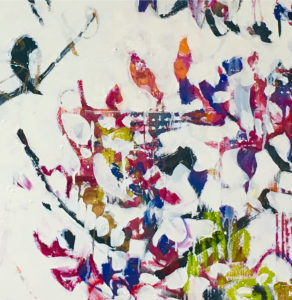 Join Ellie Harold for “Intuitive Painting: Permission to Paint Expressively,” designed especially for mature women artists of all skill levels who wish to explore this medium for soulful exploration. The retreat provides attractive accommodations (your own room!) along with lightly structured activities for centering, relaxation and low stress art-making. You’ll have plenty of free time to muse, paint, write and reflect while enjoying the colors, textures and flavors of San Miguel. This Retreat has the potential to transform not only your art but your life! You’ll return home with a specific art “care plan” to assure support for further creating. Details at www.EllieHarold.com.
Join Ellie Harold for “Intuitive Painting: Permission to Paint Expressively,” designed especially for mature women artists of all skill levels who wish to explore this medium for soulful exploration. The retreat provides attractive accommodations (your own room!) along with lightly structured activities for centering, relaxation and low stress art-making. You’ll have plenty of free time to muse, paint, write and reflect while enjoying the colors, textures and flavors of San Miguel. This Retreat has the potential to transform not only your art but your life! You’ll return home with a specific art “care plan” to assure support for further creating. Details at www.EllieHarold.com.
Featured Artist
Painting is my passion and joy. My process is intuitive, though informed by good composition and design principles. I paint what I remember, or think about, or feel, or just what comes off my hands to the brush to the canvas. Texture and color are of primary importance to me. I typically choose my support, texture it, select my palette, and go. There is nothing more satisfying to me than watching paint run and move. I love the surprises. I experiment and learn constantly. It is a remarkable journey. One I am pleased to share with you.

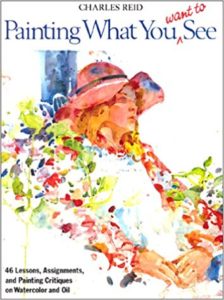

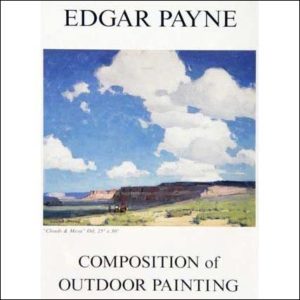
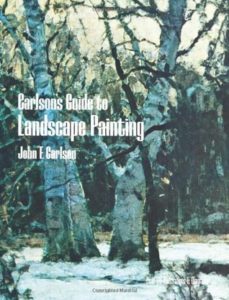
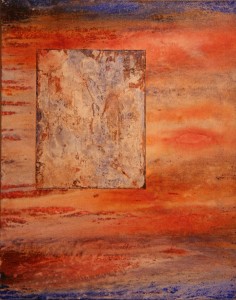



16 Comments
Interesting. Each of those books has a treasured place in my library , especially Alla Prima.
AllaPrima is now available as a PDF Download. As far as I can tell, it’s a free download. https://oiipdf.com/alla-prima-everything-i-know-about-painting
Thank you for this hint. It is a free download.
Thank you!
Thank you for this! I am busy making every amateur mistake in a large landcape painting and I think AllaPrima will help save me from myself..
Hello! Have you heard of David Leffel? His books are wonderful… “An Artist Teaches” and “Self-portraits”… He is a wonderful teacher…
Alas, out of print, I think.
That is one of the most profound pieces you and Robert have ever done. I have been teaching art for about 20 years. Though recently retired, I am focusing on sales these days. My wife Libbie and I recognized early in our teaching that people didn’t know the fundamentals. Yet, they wanted to create quality art. Our workshops over the years always focused on the basics: COLOR, COMPOSITION, CONCEPT.
You may have an occasional winner without any knowledge, but they will be few and far between.
I hope the world is listening to your short treatise on the subject.
I am still a fan of Robert. I know a lot of folks do miss his thoughtful writings. Thank you for continuing the dialogue.
Yes, yes, and yes!
This reflection and magnification of the the basics of knowing fundamentals is paramount. The article is great. So true, very much like building a house on sand, rather than upon a well executed concrete foundation.
Another good letter to remind us to slow down and take time to do the drills and practice. I recall being young and looking at well executed paintings that appeared to be done in a quick spontaneous way. Why didn’t mind turn out that way when I quickly and spontaneously smashed at my canvas? It takes years to understand the importance of learning the fundamentals. In fact, no matter how long we’ve been playing our brushes, doing the drills and practicing is always important. Keeps the eyes and brain in shape.
“… in other words, a hard-won grasp of the basics.” Thank you, sincerely, for closing with that oft-needed reminder.
In the world of ballet, every company dancer is required to attend the daily regimen of going through the rudiments under the guidance of an instructor with a ‘rehearsal pianist’ providing accompaniment. There are no exceptions and the company’s principal dancers are seen going through this daily regimen along with the most junior members of the ‘corps de ballet’. English guitarist Robert Fripp, despite his decades of acquired proficiency, has a disciplined daily routine where he sits undisturbed in his music room and practices for an hour or more. What he actually plays during his practice remains an unknown but it’s commonly understood that what he is doing is ‘working on his craft’.
Meanwhile, here in Canada (a relatively young country with a growing reputation for applauding itself) our own media have acquired the rather annoying habit of loudly singing the praises of musicians, artists, athletes and even scientists principally on the strength of their being ‘Canadian’. Sadly, these individuals’ names rarely appear in the headlines and their actual hometown is only mentioned as an afterthought. So much for ‘civic pride’ and giving proper credit to their dedication and hard work in becoming really good at what they do. It’s all about being ‘Canadian’, as if their citizenship is somehow the reason for their accomplishments. This is, of course, utter nonsense!
I have been painting for years. Purchased l975 Richard Schmid Landscape Painting and also the one mentioned above. Another favorite book was by western artist, Ramon Kelley. All beautiful and informative issues to have in your library. I also have many others but the above are my favorites and I refer to them often just to enjoy their works.
Thanks.
This is one of the most profound essays Mr. Genn ever wrote. In fact everything he ever wrote should be drummed into every student in every art school every day. And all the books shown here should be required reading as well. One can only dream…..
I am 78 years of age and I have been painting and studying art- a degree in Fine Art, many many classes with excellent artist-teachers, study in Mexico, many trips to many museums , galleries, studios etc in Europe, Asia, USA. Since I was 5 years old.. and I am a good painter. But my goal is to become a REALLY
good painter.I know what that means.
Other people do also. But agreed- no one gets there without lots of learning and lots of experience.
I no longer care about showing or selling- just doing the work. Always hard and always exciting.
As the ballet dancer indicated- an artist of any description has to do it. Tom Brady watches hours of film every day. Every professional musician that I know or know about practices every day.
To be really good requires really good
Attention. Focused energy.
As an Abstract, non-representational painter, I felt some resistance to this post. Then I realized, I spent most of my life learning the basics (not saying I mastered them) of representational art -but 20 years ago, I was totally bored with landscapes etc, and only really wanted to express, to focus on feeling, emotion, etc. It became a passion and I have spent 15 years trying to master THAT. It’s almost like the two skills are totally different.. I see so many traditional, academic painters who try to do abstract and their training does not allow them to. They are horrible.
And so I think there can be painters who are the opposite… great at creating beauty in abstract, but not so much in representational. Thank you for getting me thinking about that and realizing how glad I am that I have taken the time to refine my skills in an area I ENJOY! For otherwise, I would certainly be creating in clay or writing instead of painting.